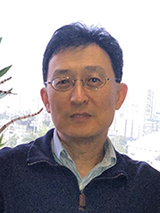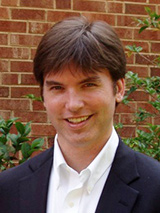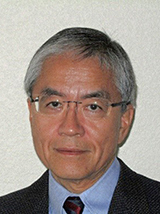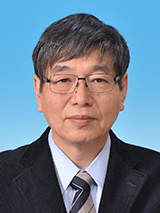Plenary Lecture
Prof. Joannes J. Westerink (University of Notre Dame)

Towards Heterogeneous Process, Scale, and Model Coupling in Simulating the Hydrodynamics of the Coastal Ocean
Computational models for wind waves and storm driven surge and currents in the coastal ocean and adjacent floodplain must provide a high level of grid resolution, fully couple the wind wave and long wave processes, and perform quickly for risk assessment, flood mitigation on system design, and forecasting purposes. We have developed a high performance unstructured grid computational framework that couples circulation and non-phase resolving wave models while scaling efficiently up to 32,000 cores. Current development is focused on incorporating a wider range of physics affecting coastal and inland water levels as well as forces on infrastructure including large scale baroclinically driven processes, rainfall runoff in upland areas and on the coastal floodplain, and wave run-up. This is accomplished with an interleafing framework in which heterogeneous models focused on a select range of processes are coupled over the same domain and/or specific targeted equations that are dynamically assigned to changing portions of the domain as appropriate to the prevailing flow conditions. This is all done in a dynamically load balanced framework. Algorithmic development is focused on DG solvers, ideally suited for the associated strongly advective flows, allow super-parametric elements for p=1 and p=2 and iso-parametric elements for p=3 in order to achieve improved convergence rates and overall run me efficiency, and allow for the selection of localized physics on the elemental level.
Prof. Manolis Papadrakakis (National Technical University of Athens)

Seismic Assessment of Reinforced Concrete Structures based on State-of-the-art 3D Detailed Nonlinear Finite Element Simulations
The nonlinear dynamic numerical simulation of reinforced concrete structures is characterized by instabilities, which are mainly caused by the cracking of concrete and the rapture of steel reinforcement. When dealing with this numerically unstable and computationally demanding problem, the numerical solution procedure becomes extremely cumbersome, thus leading to convergence issues and the inability to capture the ultimate bearing capacity of the structure. Additionally, the lack of objectivity, when using 1D and 2D models, does not allow the study of the nonlinear dynamic response of R/C structures without introducing significant simplified assumptions in-terms of material behavior and the exact discretization of the structural geometry. In light of these well-known modeling limitations, the main objective of this research work is to alleviate the above-mentioned numerical constraints, by developing a state-of-the-art 3D detailed modeling approach that will provide the computational tools to perform dynamic nonlinear analysis and design on large-scale reinforced concrete structures, by accounting for soil-foundation-structure interaction phenomena as well. In order to achieve this objective, the numerical handling of the solution instabilities is addressed herein, while the use of the HYMOD surrogate modeling approach is discussed as a potential more practical solution to the overall modeling problem. Furthermore, the results from a developed parallel solver for both the generation of embedded rebar elements within the concrete mesh and the handling of the resulting discretized numerical model in parallel and distributed computing environments will also be presented.
Prof. Seiichi Koshizuka (The University of Tokyo)

Numerical Simulation for Nuclear Plant Safety in Tsunami using Particle Method
Severe accident occurred in a nuclear power plant by tsunami flooding after the 2011 off the Pacific coast of Tohoku Earthquake. The direct cause of the accident has been revealed as the inadequate countermeasures against tsunami. The predicted tsunami height was much smaller than the actual one. The underlying root cause is, to the author's opinion, unmatured behavior against uncertainties. Prediction about the natural disasters involves a lot of uncertainties which were not properly managed for the nuclear power plants. Particle methods have been developed for analyzing multiphase flows with phase change as well as violent free surface flows. Meshless discretization is a significant advantage for such complex phenomena. Spreading of the molten nuclear reactor core is analyzed by the particle method in the case of severe accidents. Solidification is modeled by fixing the relative motion of the moving particles. Large-scale tsunami run-up simulation is carried out on the nuclear plant site using the tsunami wave in 2011. Inundation in a turbine building is also analyzed because the blackout of emergency power is caused by the internal flooding. Floating objects are considered as fluid-rigid body coupling problems. The trajectory of the floating object is extremely sensitive to the initial position, the coefficient of restitution, etc. The effect of the floating objects should be assessed by statistical approach, which is expected to study more in future. Advancement of the simulation technologies considering uncertainties will make our society safer.
Prof. Makoto Tsubokura (RIKEN R-CCS/Kobe University)

Prediction and Countermeasure for Droplet/Aerosol Infection under the Indoor Environment for the Fight against COVID-19
Virus droplet infection caused by sneezing, coughing, or talking is strongly influenced by the flow, temperature and humidity of the air around an infected person and potential victims. Especially in the case of the new coronavirus, possibility of aerosol infection by atomized droplets is suggested, in addition to the usual droplet infection. Because smaller aerosol particles drift in the air for a longer time, it is imperative to predict their scattering route and to estimate how surrounding airflow affects the infection. Then the risk of droplet infection can be properly assessed and effective measures to reduce infection can be proposed. In this project, massively parallel coupling simulation of virus droplet scattering, with airflow and heat transfer under the indoor environment such as inside commuter trains, offices, classrooms, and hospital rooms are conducted. By taking into account the characteristics of the virus, its infection risk of virus droplets is assessed under various conditions. Then countermeasures to reduce the risk are proposed from a viewpoint of controlling the air flow. Complex Unified Simulation framework called CUBE, developed at RIKEN R-CCS and implemented on the supercomputer Fugaku, is mainly used, which makes it possible to execute the world-largest and highly accurate virus droplet simulation ever conducted. As the output of this project, the risk of droplet infection under the indoor environment is quantitatively evaluated, and specific countermeasures to reduce the infection risk is proposed in terms of effective ways of opening/closing windows, use of air conditioning, and placement of partitions. These outputs from the simulation can protect the living and working environment from virus droplet infection, and contribute to earlier recovery of our socio-economic activities.
This project is supported by the Ministry of Education, Culture, Sports, Science and Technology and RIKEN R-CCS, under the collaboration with RIKEN, Kyoto Institute of Technology, Kobe University, Osaka University, Toyohashi University of Technology, Kajima Corporation, and Daikin Industries, Ltd.
Semi-Plenary Lectures
Prof. Olivier Allix (ENS Cachan)

Computational Damage and Failure Analysis of Laminates across the Scales: Progress and Challenges
The precise sizing of composite laminates requires taking into account various deterioration scenarios that happen at the micro or meso scale. The presentation will discuss those different scenarios and the associated modeling and computational strategies to take them into account. Two objectives will be mainly considered: the virtual testing of composite material and the virtual testing of composite structure.
Prof. Yuri Bazilevs (Brown University)

Recent Developments in Immersed IGA-Meshfree Methods for Extreme-Event Simulation
This presentation is focused on Isogeometric Analysis (IGA) and RKPM Meshfree method with applications to extreme-events simulation. A novel framework for air-blast-structure interaction (ABSI) based on an immersed approach coupling IGA and RKPM is presented and verified on a set of challenging examples. Several numerical challenges exist for carrying out the aforementioned simulations, and these are addressed in the present work. The challenges include shock capturing in both the fluid and solid parts of the problem, and addressing near incompressibility, which is important in the presence of plastic deformations. Extension of the proposed ABSI framework to handle energetic materials is also presented.
Prof. Kwok Fai Cheung (University of Hawaii)

Non-hydrostatic Modeling of Tsunami Waves
Tsunami waves are weakly dispersive and are often modeled using the nonlinear shallow-water equations. Inclusion of non-hydrostatic terms in the governing equations and a shock-capturing scheme in the numerical formulation greatly enhances the modeling capability for academic research and real-world application. The resulting non-hydrostatic model can describe tsunami generation from time-varying seafloor deformation making the calculation compatible with finite-fault modeling of earthquake rupture. Dispersion is a non-hydrostatic property responsible for the spatiotemporal resolution of trans-oceanic propagation that influences the subsequent coastal inundation processes. Shock-capturing is instrumental for modeling tsunami bores near the coast and conserving flow volume in flood hazard mapping. My talk will give an overview of the non-hydrostatic model NEOWAVE developed at the University of Hawaii and highlight its implementation in a series of cross-disciplinary studies from megathrust rupture mechanisms to tsunami loads on buildings.
Prof. John E. Dolbow (Duke University)

Gradient-Based Damage Methods for Cohesive Models of Dynamic Fracture and Fragmentation
Recently, much attention has focused on gradient-based damage and phase-field models for fracture problems. In these methods, sharp fracture surfaces are approximated with a scalar damage field that varies continuously throughout the domain. The evolution of the damage field is determined by a secondary equation that incorporates a length scale for regularization. These models have enabled simulations of complex fracture problems in three dimensions and demonstrated robustness for simulating challenging phenomena such as crack bifurcations and coalescence. Many of these approaches have been based on a variational formulation for Griffith- type fracture models. While these approaches have seen considerable success, they have also suffered from a number of shortcomings when applied to dynamic fracture and fragmentation. These include, for example, the computational cost of a global reaction-diffusion auxiliary equation and challenges associated with introducing critical thresholds that trigger the onset of damage. In this talk, we describe an alternative approach that is based on recent work establishing links between gradient damage methods and cohesive-type models of fracture. The approach naturally introduces a threshold for the onset of damage and allows for the fracture properties to remain fixed as the regularization length scale vanishes. We will discuss strategies for enforcing irreversibility in these approaches, modifications for anisotropic failure problems, and methods to transition from continuous to discontinuous representations of the fracture surfaces. Finally, applications of these models to a range of problems in quasi-static and dynamic fracture in quasi-brittle systems will be presented.
Prof. Kazuo Kashiyama (Chuo University)

Experience-Based Noise Evaluation System Using VR Technology
The evaluation of noise is very important for planning and designing of various construction works in an urban area. There have been presented a number of evaluation methods for noise simulation. Based on the frame of reference used, those methods can be classified into two categories: 1) Methods based on the geometrical acoustic theory and 2) Methods based on acoustic wave theory. Both methods have advantages and disadvantages. For the methods based on the geometrical acoustic theory, the CPU time is very short but the numerical accuracy is low comparing with the methods based on the acoustic wave theory. On the other hand, the method based on the acoustic wave theory gives accurate solution but the simulation becomes a large scale simulation. In the conventional studies, the computed noise level is described by the visualization using computer graphic such as iso-surface. Although the visualization is a powerful tool to understand the distribution of noise, it is difficult to recognize the noise level intuitively.
In this presentation, an experience based noise evaluation system using virtual reality technology is presented. Both geometrical acoustic and acoustic wave theories are employed. The system exposes to the users the computed noise level with both the auditory information using sound source signal and the visual information using CG image. The CIP method using AMR, BEM based on a fast multipole method are employed for the system based on the wave acoustic theory. In order to investigate the validity and efficiency of the method, we performed the observation of traffic noise for various types of vehicle, trains, airplane and construction noise. The present systems are useful for planning and designing tools for various constructions works in an urban area, and also for consensus building for designers and the local residents.
Prof. H.K. Lee (Korea Advanced Institute of Science & Technology)

Micromechanical modeling of different types of composites in construction
In recent decades, various types of novel composites have been researched in construction industry. As these materials are newly introduced, the prediction of their enhanced characteristics and new functionalities should be investigated. This talk briefly introduces recent works related to the modeling of self-healing and electrical conductivity in different types of composites for building and construction applications. The micromechanical modeling of self-healing cementitious composites considering progressive healing mechanisms, and the prediction of the electrical conductivity of polymeric and cementitious composites considering the curviness of inclusions are briefly summarized.
Prof. P. Benson Shing (University of California, San Diego)

Use of Computational and Large-scale Experimental Simulations to Advance the Seismic Design of Buildings and Bridges
To design new civil infrastructure systems and evaluate the safety of existing structures for extreme seismic events, engineers and code-development processes have been increasingly relying on nonlinear computational tools. Detailed nonlinear computational models can be used to understand and extrapolate experimental data for the development of design and detailing requirements and to assess the collapse resilience of structural systems. However, the nonlinear behavior of a structural system involves various complex mechanisms developed in the materials as well as structural components and systems. For reinforced concrete structures, critical mechanisms include the cracking and crushing of concrete, the yielding, buckling, and fracture of reinforcing bars, and the interaction between different materials. How a concrete component behaves depends not only on the reinforcing details but also on their interaction with adjacent components. The modeling of these mechanisms requires insights from physical experiments as well as validation by large-scale system-level experiments. This presentation summarizes some recent work of the author along these lines on reinforced concrete bridges and reinforced masonry buildings.
Prof. Kenichi Soga (University of California, Berkeley)

Large Deformation Modeling and Simulations of Landslides
Traditional geotechnical analyses for landslides involve failure prediction (i.e. onset of failure) and the design of structures that can safely withstand the applied loads. But the analyses provide limited information on the post-failure behavior such as failure geometry and the rate of movement. Modern numerical methods for large deformation simulations are now emerging and some of them are started to be adopted by geotechnical engineers to simulate large mass movements. There is also a broader impact because of their potential ability to evaluate the risks of catastrophic damage if a landslide occurs. In this talk, various large-deformation analysis methods are introduced and their applicability for solving landslide problems is discussed. In particular, a technique called the material point method (MPM) is attractive because it allows numerical implementation of history-dependent soil constitutive models and boundary conditions commonly used in geotechnical analysis in a relatively straightforward manner. The recent theoretical development on the multi-phase soil-fluid coupled MPM framework is also providing an opportunity to simulate catastrophic landslides involve seepage forces. On the other hand, further development is required to build confidence in the engineering community to use large deformation simulation methods in engineering practice. This includes better appreciation of failure development processes such as softening induced shear band formation and tensile cracking, identification of energy dissipation mechanisms that are responsible for runout distance and rate, and the role of thermo-hydro-mechanical interaction on these processes and mechanisms.
Prof. Tetsuro Tamura (Tokyo Institute of Technology)

LES Prediction of Strong Wind Disaster under Extreme Meteorological Events
Recently in Japan, people tend to realize so frequent occurrences of tornado and many attacks of typhoon to Japanese islands. In 2011, Tsukuba tornado arose in the Kanto plain based on a supercell. It causes the wind gust disaster on houses built on city area. In 2018, the typhoon Jebi attacked at Osaka area on September 4. High wind collapsed the wooden houses and the claddings of buildings and structures. To the future, extreme meteorological events may continue and the impact with higher intensity possibly acts on the urban area covered by buildings and houses. Accordingly, we should elucidate high wind characteristics for the realization of safety in city. This research presents a Large Eddy Simulation (LES) method for generating broad-banded turbulence flow that is able to regenerate high frequency components for existing meteorological model output. We performed the hybrid analysis of the meteorological model and engineering LES, in order to investigate near-ground turbulent wind under the recent extreme meteorological events. Immersed Boundary Method/Building Cube Method is employed for solving flows around actual complicated building shapes. This study numerically estimates the maximum wind velocity and the peak pressures on the building. Mechanism for process to failure of buildings will be discussed for establishment of safety at city.
Prof. Zhuo Zhuang (Tsinghua University)

Data-driving-based theoretical and numerical fracking models to optimize recovery efficiency in shale
Hydraulic fracture (fracking) technology in gas shale field engineering is highly developed last decades in North America and also recent years in China, but the knowledge of actual fracturing process is mostly empirical and makes the mechanician wonder. In this work, the data-driving-based theoretical and numerical fracking model is proposed to predict and optimize recovery efficiency in shale. Shale is a typical layered and anisotropic material whose properties are characterized primarily by locally oriented anisotropic clay minerals and naturally formed bedding planes. The debonding of bedding planes will greatly influence the shale fracking to form a large-scale highly permeable fracture network, which is the stimulate reform volume (SRV). Both theoretical and numerical models are developed to quantitatively predict the growth of debonding zone in layered shale under fracking. Some parameters are proposed to characterize the corresponding conditions of tensile and shear debonding of bedding planes. It is found that debonding is mainly caused by the shear failure of bedding planes in the actual reservoir. Then the theoretical model is applied to design the perforation cluster spacing to optimize SRV. The SRV and optimal perforation cluster spacing range can be quantitatively calculated to guide the fracking design. These results are comparable with the data from real-time signal evolution by micro earthquake monitor in field engineering.







